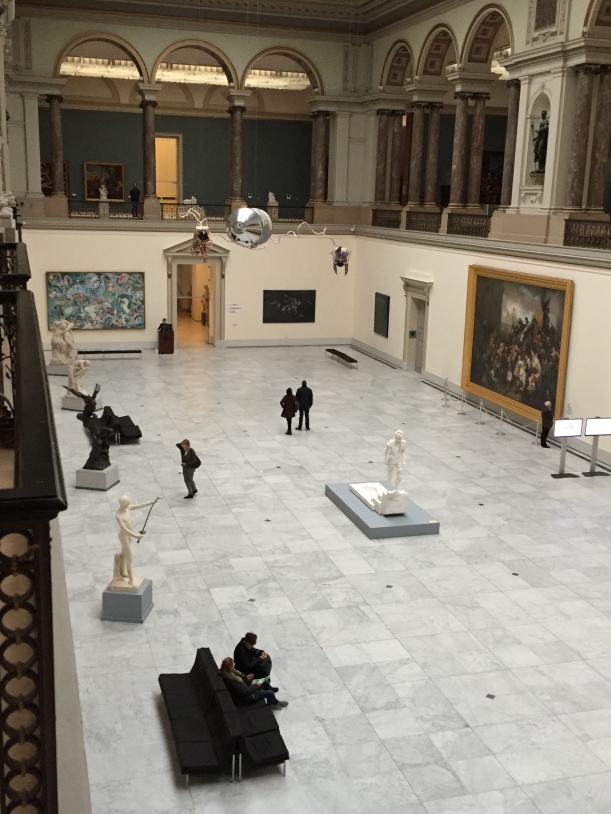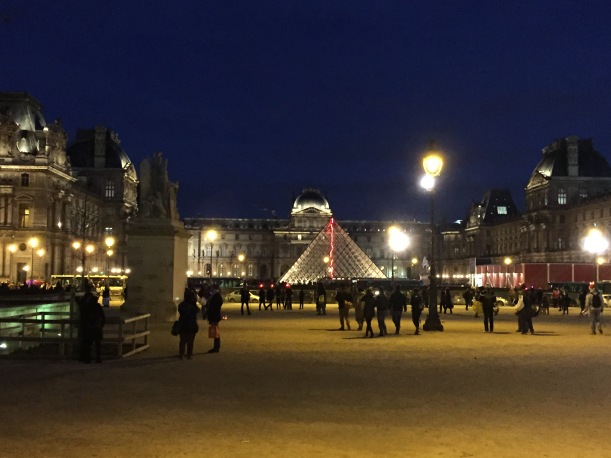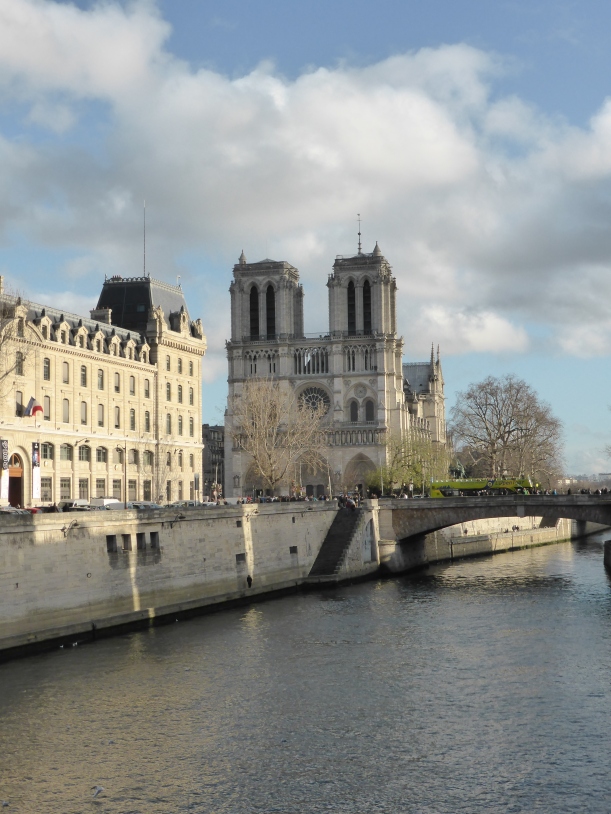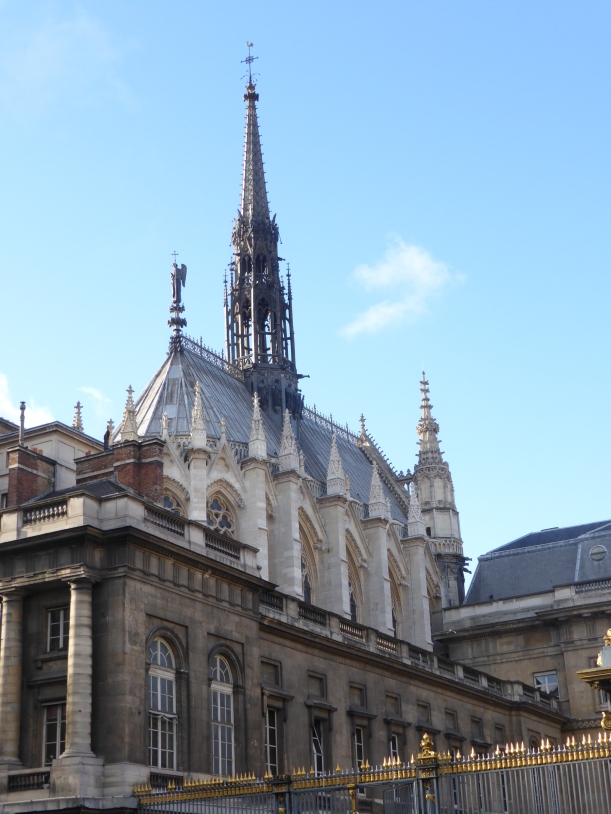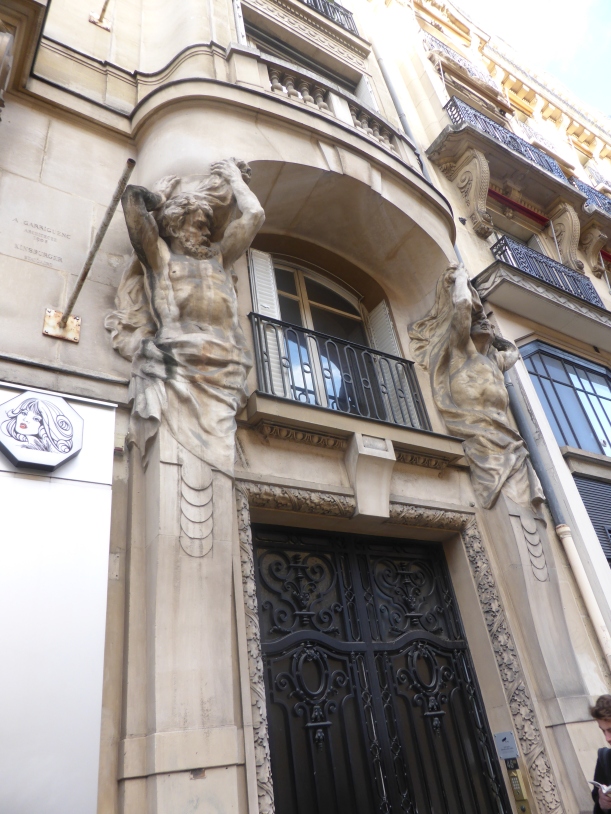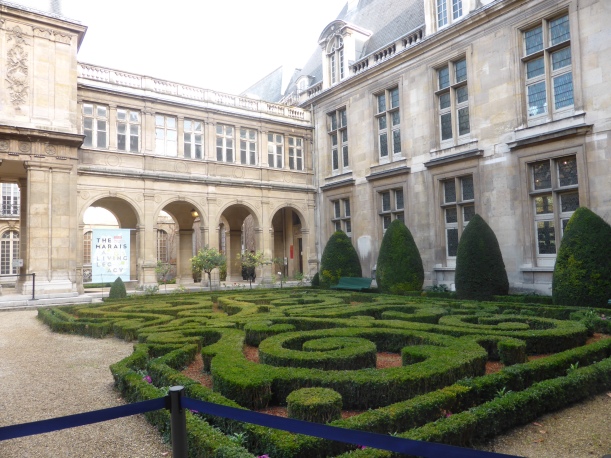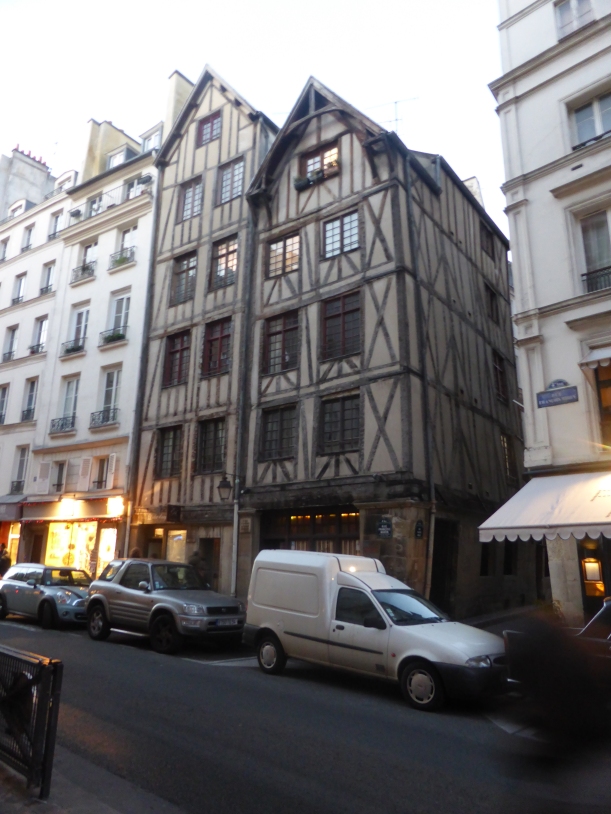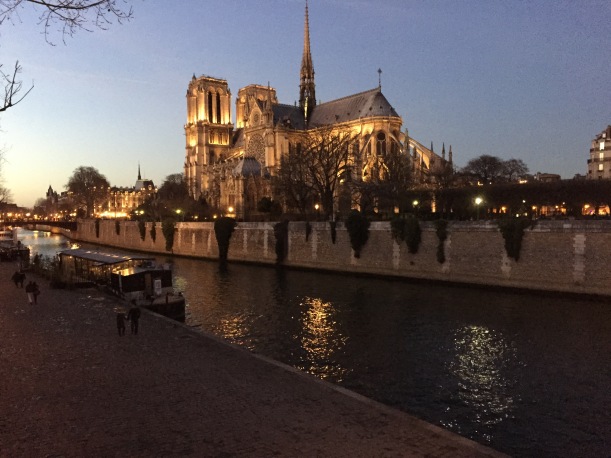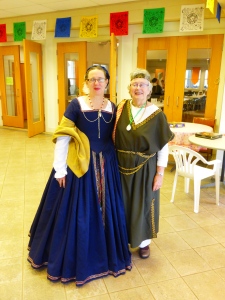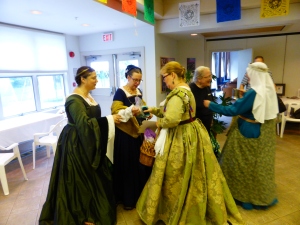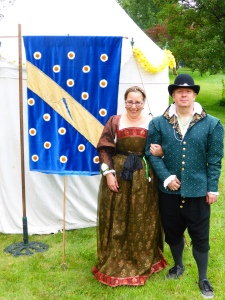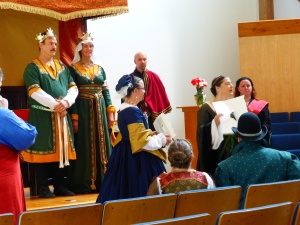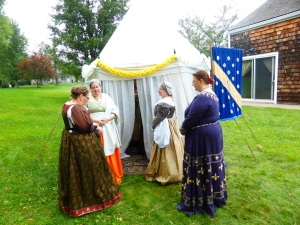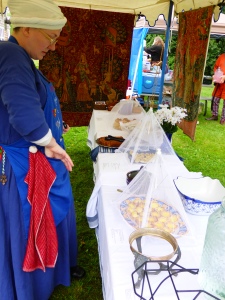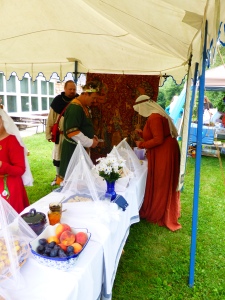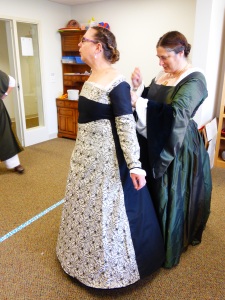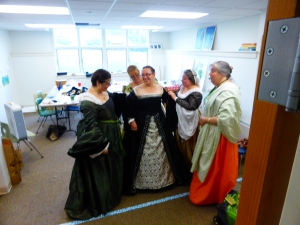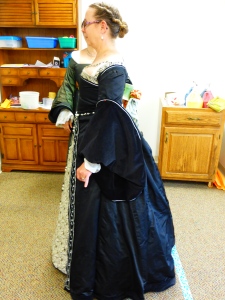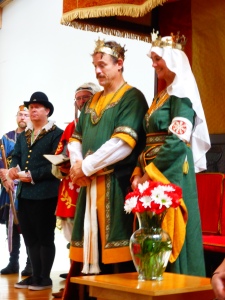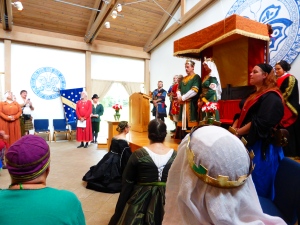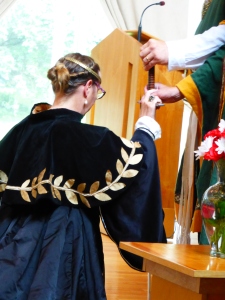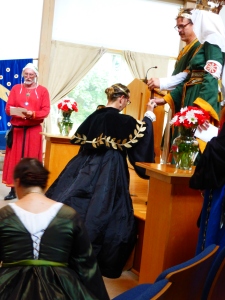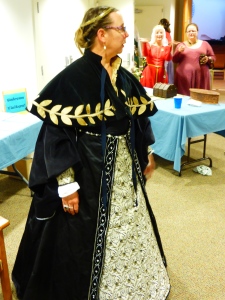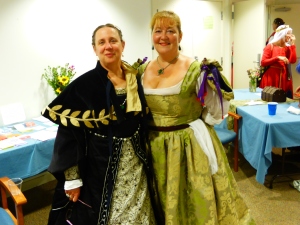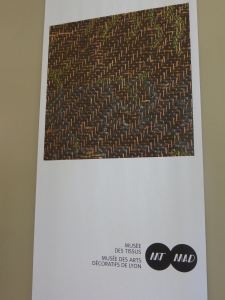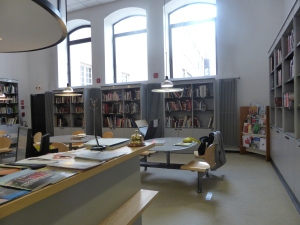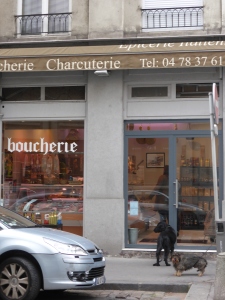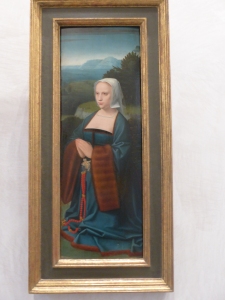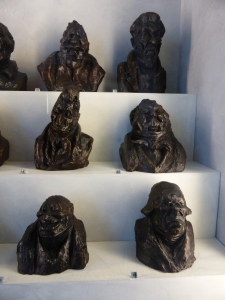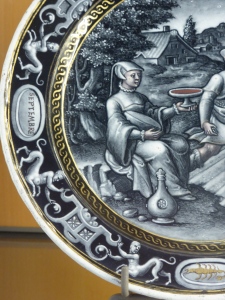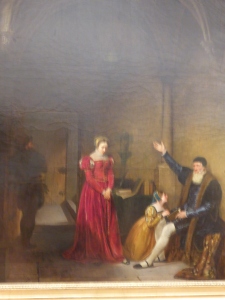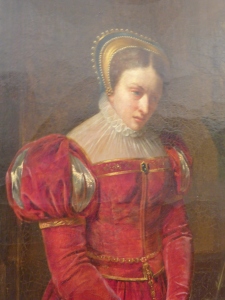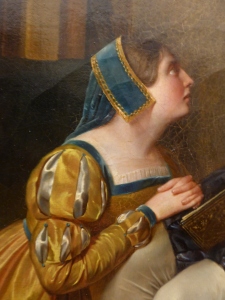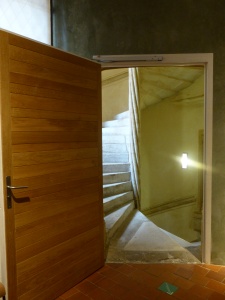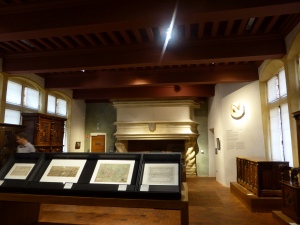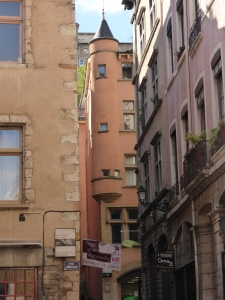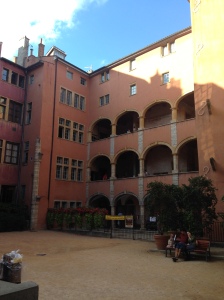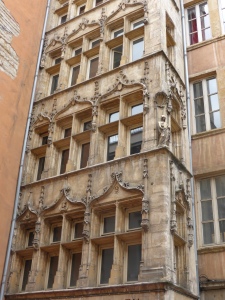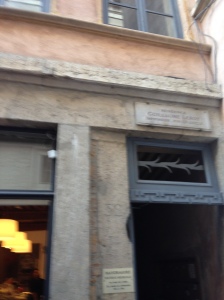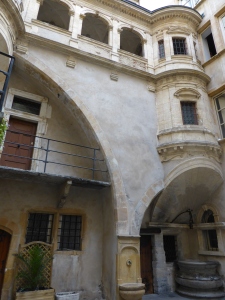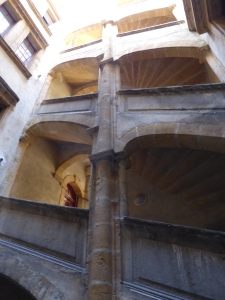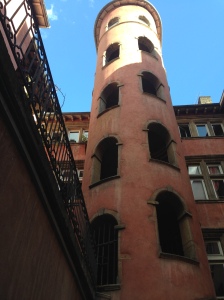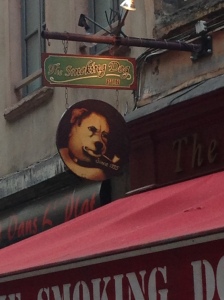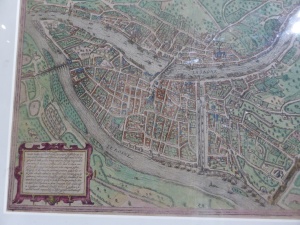Our 3rd Belgian city on the Jim plan was Ghent. By train, Ghent was just a quick hour away from Brussels. There was a train at the same time within every hour both to and from Ghent. All we had to do was note when within the hour this occurred and show up at the train station. Trains in Europe are so easy to use!
Ghent was the first city we visited where the “old town” was a bit of a distance from the train station. We figured out that there was a tram that would take you up to the “old town”, so we deposited our Euro coins into the ticket machine and boarded. We got off just a block or two away from the old Groete Markt (Great Market Place). Unfortunately, the beer destination of choice did not open til 4:30, and we were hungry! So we found a nice little place on the Groete Markt, where I once again had spaghetti (comfort food) and, of course, good beer. Because we were visiting Ghent on a Monday, most of the museums of interest were closed. But we had found a “History of Science” museum that was open. It was, alas, back down by the train station. So with our bellies refilled, we headed back down the hill. This time, we could not take the tram this time because we were running low on Euro coins – ticket machines only take coins. So we walked back down, the first of much walking for the day. I pass the blogging over to Jim for a description of this part of our trip…..
While in Ghent, we made a special pilgrimage (some called it a forced march) to visit the Museum of the History of Sciences at the University of Ghent. As European universities go, U. Ghent is not really old, but its founding in 1817 puts it in an important century of scientific advances. The museum housed an impressive array of scientific instruments and artifacts. For example, they had many, many microscopes ranging from the first one, built by Antonie van Leeuwenhoek (fits in the palm of your hand — probably the one we saw was a facsimile) to a vintage 1950s Siemens electron microscope (much bigger than the palm of your hand).
Of interest to Jim was the fact that there were some impressive figures from the history of science (and chemistry, in particular) on the faculty at Ghent during the 1800s. For example, Joseph Plateau, a scientist who used various frames to study soap films and how they form “minimal surfaces”. He taught there for many years. He also developed what might be called the first motion picture.
Leo Baekland was the inventor of Baeklite, the first commercial plastic. He taught and did research at the university, as did August Kekulé (pronounced “kek-you-lay”), the first chemist to conceive of the ring structure for the benzene molecule. That advance was a big deal for organic chemists in the 1860s!
One of the instruments housed in the museum was a spectrograph made by a scientist named Melloni. The spectrograph was used to study the light and energy leaving a heated sample (think of what you see when you look at a light bulb). With the instrument, Melloni came to the conclusion that the energy leaving the filament had characteristics of light waves. Big deal? Sure was. At the time of his work (1840s), the scientific world did not think of heat energy as a form of radiation, much less that it was related to wave phenomena. But Melloni’s experiments pretty much showed that. Problem was, he had no theoretical support for explaining his work at that time. Those times would not come until about 1900 when Max Planck used the idea that energy is quantized to explain Melloni’s (and others’) findings about wavelengths of energy emitted from objects at different temperatures (for you science geeks: most sarcastically explained in the XKCD comic strip’s inimicable style). Planck’s work was what Einstein used to develop his ideas and you probably know where things went from there….
Did we know all about this story ahead of time? Heck no! While looking at the instrument, a professor from the university, who was attending a reception hosted by the museum, noticed that Jim was really studying the case containing the instrument. He came by and began talking to us in Dutch. When we looked clueless, he said (in English) “oh, in English” and proceeded to chat with us in that language about the instrument, its history, and the fact that he had just finished working with a master-of-science student to prove that the instrument did really do what Melloni said it did. The professor was very kind and very excited about the opportunity to share his knowledge. For us, it was wonderful to learn about a bit a history in a special place and to enjoy the passion of a scientist for his work. Well worth the pilgrimage (despite Dawn’s very sore feet)!
We return to our regularly scheduled blogging by Dawn…… Our next destination was to go back to the interesting beer destinations, which were, of course, back up the hill in the Groete Markt. At this point, I was categorically refusing to walk back up there. My feet were saying “enough!”. So Jim asked the very nice man at the museum to change a Euro note into coins and inquired what the best way was to get back to the Groete Markt by tram. The trip back up involved very little walking (making Dawn happy). We got off at a stop that was right near another of the destination beer pubs (making Jim happy). The first one we found was quite small and filled to the brim with folks relaxing after a busy day. So we went around the corner, back to the Groete Markt, to the place that had been closed earlier in the day. Thankfully this one, De Dulle Griet, was now open.
This pub was a wonderful place! Great atmosphere – see photo on the left below! And it had lots of interesting beer; in keeping with Belgian tradition, it also had the glassware for every one of those beers – see image on the right below! In this same photo, you can see a very large beer glass in a wooden stand. This is the “house” glass – it holds 1.2 liters (40 oz.) of the house golden ale! That is a lot of beer! And many were being sold! We opted for smaller quantities so we could taste several different beers! We spent a lovely hour or two people-watching, chatting, and sipping good beer!
We decided, yet again, that our beer and the lovely cheese cubes, was a pretty sufficient amount of food; no dinner required. So we headed back down to the train station. We had made sure to save enough coins to take the tram back. I was still not up for another long walk!
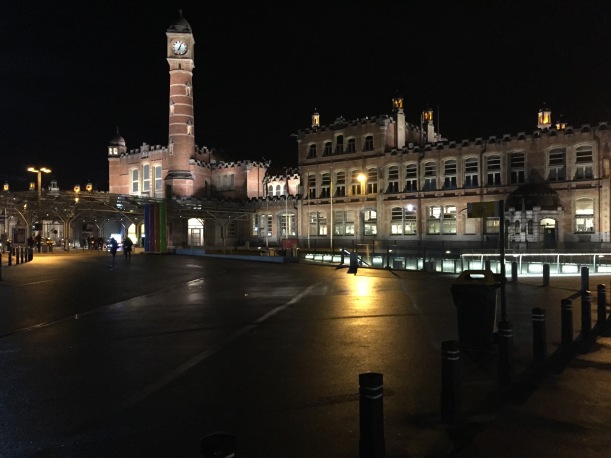
Ghent’s main train station
Our train trip back to Brussels was uneventful, a relaxing time to sit after a busy day. I decided that, while a real “dinner” wasn’t really needed, I did need “a little something” (as Winnie the Pooh is want to say). So once back in Brussels, we went back to the lovely little café where we had had the raspberry tart a few days earlier, because the image of the other types of tarts there was still quite clear in my mind. It was raining pretty steadily by the time we got there, so I had a nice hot tea with the apple tart that we shared (though I confess to eating most of it) while Jim had a Chimay Blue (a brown ale). Then back to our luxurious accommodations for a bit of unwinding and then sleep.




















